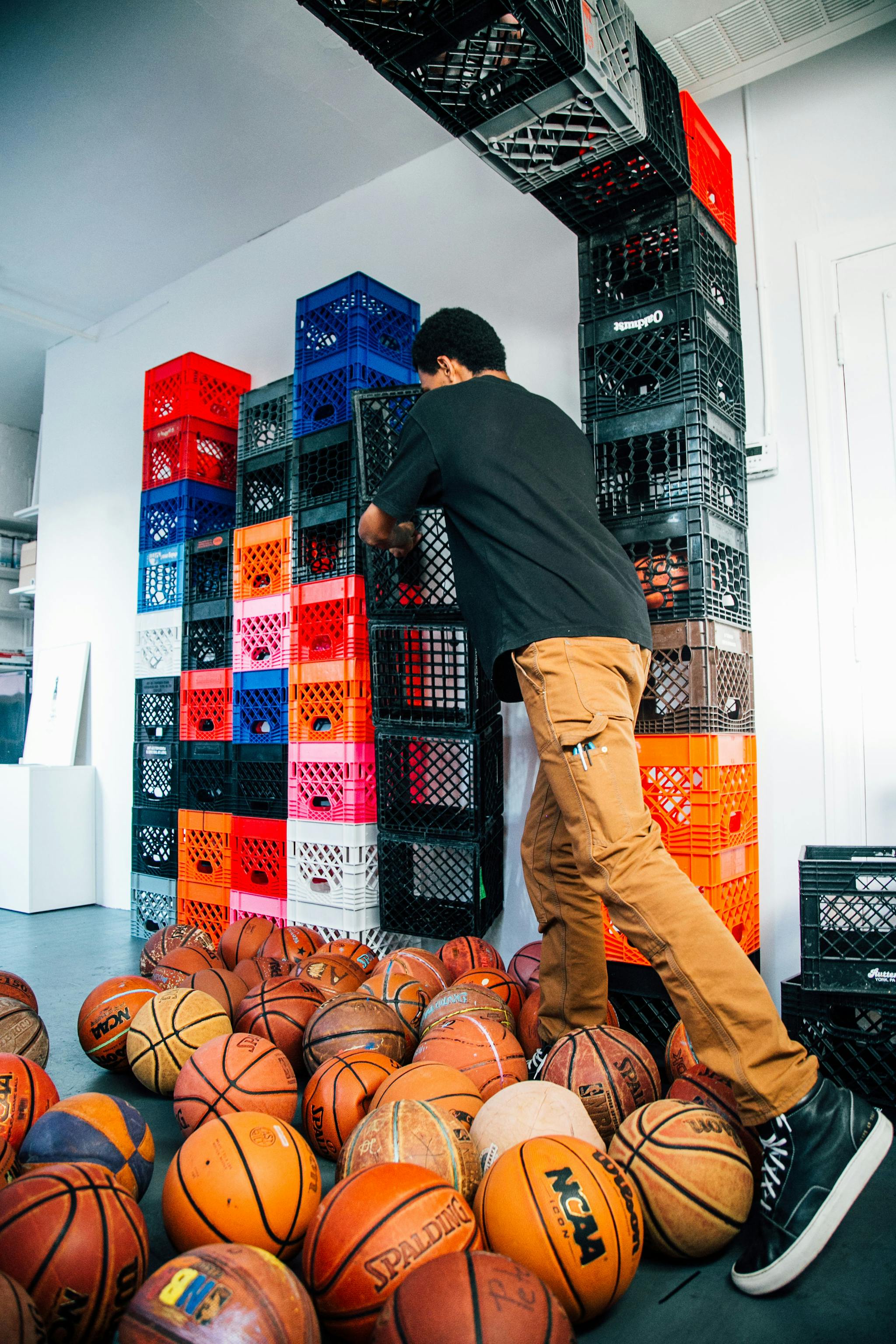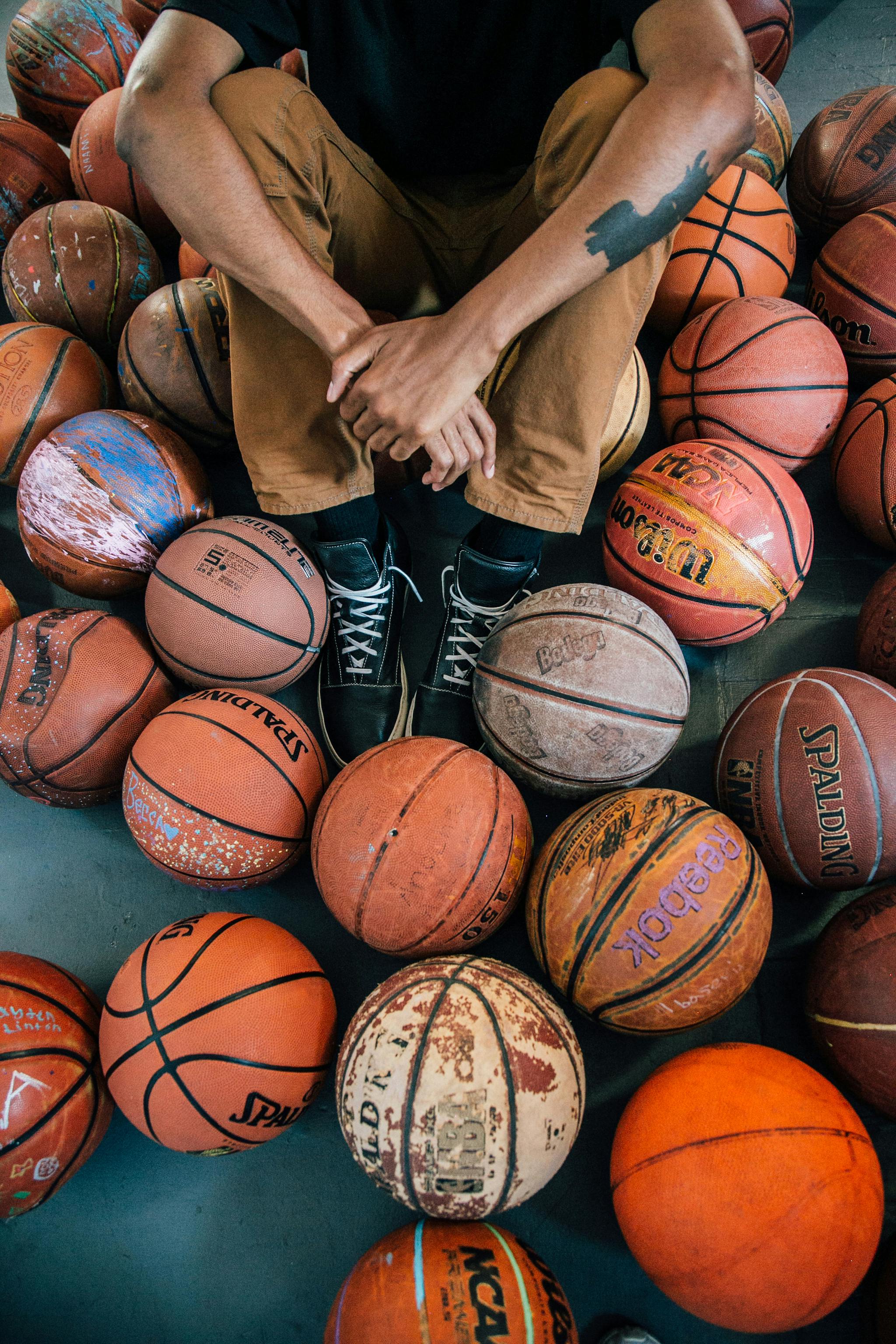For the past nine summers, the Boston Center for the Arts (BCA) has transformed its brick–clad plaza into an incubator for art that focuses on engaging directly with the public. Open to both local and international artists, the BCA’s Summer Public Visual Artist Residency encourages experimentation and the testing of new ideas, as is the case with the work of this summer’s public artist in residence, Shaka Dendy.
Born in Boston but raised in Florida, Dendy is a recent graduate of the film and media master’s program at Emerson College and a multidisciplinary artist with a socially engaged practice that includes installation and performance. Dendy is also a musician in the Boston-based industrial hip-hop band Camp Blood.
Growing up in Florida and spending school vacations in Massachusetts left Dendy longing for Boston, the city where he would eventually end up after graduating from college. Studying English, editing, writing, and new media at Florida State University as an undergraduate allowed Dendy to explore his love of writing and visual communication, two fields that led him to songwriting and film, laying the groundwork for his current work with Camp Blood and his summer residency with the BCA.
Dendy approached the BCA with the idea for a project involving basketballs—an object that played a key role in his master’s thesis at Emerson. Titled You Play Ball?, Dendy’s thesis comprised a video installation with both sculptural and performative elements. The work was responding to a lifetime of people saying “Oh, you play ball?” to Dendy upon noticing his height and skin color. For the installation, Dendy performed 1,000 consecutive free throws on video, projected it on two screens, and used the basketball to make a sculpture. In addition, Dendy created a limited-edition series of five trading cards and posters titled Memorabilia, representing five different aspects of his identity beyond a presumed athlete—English major, graduate student, filmmaker, fine artist, and musician—inviting spectators to partake in the commodification of black bodies in sports. His thesis project led Dendy to keep exploring and unpacking his relationship to basketball along with issues of access to the arts, social mobility, and race.
I met Dendy earlier in the summer while he was setting up basketball drives at the Roxbury Boys and Girls Club, Black Market in Dudley Square, and the streetwear boutique Bodega. At these events, Dendy accepted kids’ old basketballs and gave them new ones in return. He has then paired those used basketballs with milk crates to create Monuments to Gestures of Incompleteness (III & VI), a sculpture on view on the BCA Plaza. Below is an excerpt of our conversation in Dendy’s studio at the Boston Center for the Arts.
Anulfo Baez: You talk about the idea that anything can be art, including community service. Can you tell me more about that?
Shaka Dendy: The community service as art? That is sort of the gesture that I’m talking about. Extending, giving something to take something to then use them together. The project will remain incomplete until the community is involved with it. I can’t do this all by myself, so that is the incompleteness of it. Incompleteness is a gesture, it’s an invitation to bring people into the work. I don’t think everything is art, but I think art can be everything: community service, milk crates, free throws, whatever it is—that can be art.
AB: The materials you’ve chosen for Monuments to Gestures of Incompleteness (III & VI) are basketballs and milk crates. Can you tell me more about the milk crates?
SD: Formally, I like the simplicity of using a circle and a square, and then putting the ball in the crate. I remember coming here [to Boston] and my grandmother and aunt used to live in this building in Grove Hall, and there was a milk crate stuck up on a brick wall. We would play basketball with a soccer ball and a milk crate. That’s a common thing people do when you don’t have access to a hoop or a court. Then there’s also this idea that should you learn how to manipulate a basketball well enough or get good enough at basketball, that can be your socioeconomic ticket to a life where you won’t ever have to interact with a milk crate.
AB: Where are you collecting them from?
SD: A good amount just come from right outside [the studio building] where restaurants like the Beehive and Barcelona take out the trash. Even before this residency, I was walking around and collecting milk crates. I already had twelve stacked up in my house. I knew I wanted to collect them now and that I would figure out how to make it work later. I feel like kids will see them and understand them as a common thing. I feel like it makes the art more accessible to them beyond materials. I also work in a museum and I see who actually gets to come see art, what kids have access to it. There’s still a sort of inaccessibility.
AB: I go to a lot of museums and I see who comes and goes. It’s quite interesting. Every now and then you’ll see a bunch of people of color, but it’s because the museum is doing some sort of event targeted towards a specific community.
SD: Yeah, or it’s like a chaperoned school kind of thing, and then it’s like kids are forced to go there.
AB: There is a performative aspect to this work that’s really interesting, which is going into the communities themselves, talking to kids or just even having that basketball exchange. This is the socially engaged aspect of your practice—involving the kids you encounter on basketball courts across the city, at youth services organizations, and community hubs like Black Market in Dudley Square.
SD: Yes, so that’s the gesture—the act of doing these exchanges in the drives. I went into it focused on making a sculpture, then I made tests to scale in my studio, and I realized that the piece really wasn’t complete. So, the sculptures themselves are the monument to the gesture of incompleteness. The performance is the overall outreach and the drives—the sculptures are the evidence of that happening.
AB: Are you talking to the kids about what you’re doing?
SD: I gauge the level of interest in the ideas around the work, and usually if I’m going to a court and the kids are playing basketball, they don’t really stop playing basketball. They’re not here for an artist talk, so I’m not lecturing in that sense. For the kids involved, I’ve been trying to keep it more straight forward and not bore them with just talking to them about these things, but keeping it a one-to-one conversation.
AB: You’ve been shedding light on issues of social mobility and racial stereotypes with your work. You’ve talked about how when people see a tall black man like you, the first thing they say is “Oh, you play basketball?” The implication that your race and physical characteristics should dictate what you should be doing with your life is insidious. Can you tell me more about that?
SD: That was the focal point of the performance [for my thesis] and that question is not so insidious. It’s not an insult, but if you hear that all the time over and over, you start getting into that space of thinking “I really should just play basketball,” especially when your friends and parents think that. It’s about how an outside perception can then have you internalizing that. It can impact how you move through the world, which is something I’ve dealt with and fought with a lot. I’m trying to articulate that somehow or stop that from happening, or at least make people think about it.
AB: Listening to the music you’re making with your band Camp Blood, I see and hear many similarities in that you’re performing songs that touch on many of the issues you’re addressing in your art practice—issues such as racial oppression, personal identity, and blackness. I’m interested in the ways your music influences your visual art practice, or is it the other way around?
SD: It’s probably more the visual art impacting the music. I don’t really consider myself a musician in the regular sense, because I can’t read music and I feel like that is an insult to musicians who play instruments. I understand how to produce music, but even when I do that, the music that I’m making with my band Camp Blood is very minimal and I see it as being sculptural. There’s a certain form and texture to it all.
Aesthetically, we’re taking a lot of these different references and cultural touchpoints and speaking to a very specific black experience. I’m talking directly to black people, but it’s an aesthetic that is usually considered for white people. It’s this hard metal kind of punk, but then talking about and talking to the black experience specifically. I feel like that’s an audio counterpoint to the sculpture work that I’m doing, using these prefabricated found objects with a cultural significance to my experience and then speaking to them using the sort of other dialogue that is usually reserved for white male sculptors who have done a similar thing. I’m trying to break down those kinds of barriers.
AB: So, where do you go from here?
SD: I’ve got some ideas for more sculptural work in a similar vein. It’s a lot of found objects and things that have some sort of cultural significance to me or a social relevance, and then repurposing or recontextualizing how we look at that. There is not a lot of voices that I feel are speaking to a contemporary black American experience in the language of conceptual sculpture or ready-mades. I don’t want to come off sounding like these voices don’t exist, or that I’m the only one—that’s not the case—but by and large, I think these voices are a minority both in sculpture as a whole and in contemporary black artists. I think Kevin Beasley is on a very similar wavelength. Sable Elyse Smith was just in residence at the Studio Museum and is making incredible work. Another fine artist and musician from Queens named Shirt is a huge inspiration for me. David Hammons is obviously the godfather. That’s the kind of work I want to get more into and figure out more.
Monuments to Gestures of Incompleteness (III & VI) is on view on the BCA Plaza through November 11, 2019. Don’t miss it at the Boston Art Book Fair. This piece was originally published in Issue 04: The Public Art Issue and is available for purchase here. Trust us, seeing this article in print is worth it!



